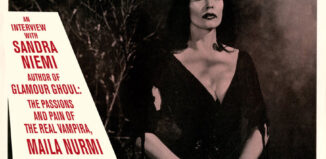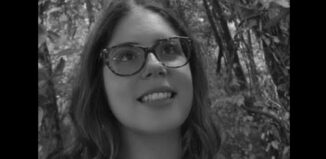Lucida and Me
by K.B. Dixon
Any photographer whose interest in the subject extends to reading more than just his camera manuals will eventually come upon the names Susan Sontag and Roland Barthes. Their books—On Photography and Camera Lucida—are canonical texts. It is difficult to read anything thoughtful on the subject that does not mention one or the other.
I read the Sontag book many years ago with pleasure, but came reluctantly and late to Camera Lucida—reluctantly because it was a translation, late because it was Roland Barthes. As a writer I was—and still am—wary of translation (a subject for another time). As a reader I was wary of Barthes. I had a residual bias against him, a keepsake from college where I and a thousand hapless others were compelled by sadistic professors to read such things as Writing Degree Zero and Elements of Semiology—a bias against him for the role he played (with Lacan, Foucault, Derrida, et al.) as a founding father of “Theory,” the torturous gobbledygooking of literary study that did for literary criticism what smallpox did for the Plains Indians.
But in the end I was lured to the book by quotations that I found everywhere and by a promise—a promise that the Barthes of Lucida was different from the Barthes of Image-Music-Text, Mythologies, and S/Z; different from the Barthes that Barthes-likers liked, the one euphemistically referred to as “rigorous” (read gratuitously obscure). Lucida was shorter, more intimate, more personal than the impenetrable tomes on which his statue stood.
What I found was a book that was technically “as-advertised”—that is, a book that was un-Barthes-like to some degree (but, alas, not to degree zero). It was by most objective standards quite likely the least Barthes-like of Barthes books, but it was not by my troglodytic standards quite un-Barthes-like enough. I found plenty of the old writer here—lapses into the calorieless paragraphs of semiological word-salad that reminded me of why I had avoided him. He talks about being torn between two languages—expressive and critical—about abandoning the latter as “reductive,” but he cannot resist the Siren call of an influential constituency clamoring for a bowlful of scholarly jargon. Clarity, it seems, is to be treated as a form of groveling.
*
Camera Lucida is divided into two parts. Each is itself subdivided into a plethora of short, related sections. Part One examines the subject of photography in general. Part Two circles around a single image. Although Part One was for me the most problematic—the most inclined to empty amplitude—it was not without its points of interest; for instance, Barthes’s thoughts about being photographed himself and the famous coinage of “punctum.”
Like most people Barthes had a troubled relationship with his photographic image. “Once I feel myself observed by the lens,” he wrote, “everything changes…I transform myself in advance into an image.” The image he transformed himself into was never satisfactory. “If only I could ‘come out’ on paper,” he writes, “as on a classical canvas, endowed with a noble expression—thoughtful, intelligent, etc! In short…be painted (by Titian) or drawn (by Clouet)!” Barthes being Barthes, he could not admit to the pedestrian vanities that plague we mere mortals. The problem was not that he looked sallow or overweight—it was that his portraitist had not captured “a delicate moral texture.” One would have to love him, he quite rightly observed, to see what he would like them to see in a photograph—the “precious essence of [his] individuality.” The fault, dear viewer, was not in ourselves that we were underlings, but in the medium that it was not sympathetic. He returns to this subject again and again. That he should address it so early in the book and at such relative length and with such obvious passion says something about its importance to him, and its importance to him is something that should be taken into account when trying to assess the various ambiguities of his wandering analysis.
If Helen’s face launched a thousand ships, Barthes’s coinage “punctum” launched a thousand tortured essays. It was catnip to the explicating classes, a favorite of fledgling poseurs everywhere. I have always had a problem with it—first as a word, but more importantly as a concept. As a word it has always struck me as unnecessarily ugly. (But then, of course, it may sound sweeter to the classically-educated Francophone’s ear than to the State University-educated Anglophone’s.) As a concept it has always seemed trite. Early in Part One Barthes takes an analytical axe to his subject (the essence of photography) and divides it into competing parts—Studium, the ostensible subject of the photograph, the source of the viewers “polite” interest; and Punctum, a tangential detail that provokes a personal reaction, that breaks through the complacent response, “an accident which pricks.” To me this seems an almost meaningless tautology—a needlessly obscure way of saying that certain photographs have a certain something about them that makes them special to certain someones—a commonplace that when draped in Latin becomes a shiny original thing, a breathtakingly sophisticated utterance.
Find the Punctum became a popular game for a while—a Where’s Waldo for academics. A futile game, I’m afraid. What is punctum? A special something that may not be found in every photograph. What is this special something? It differs from one person to the next. It is a detail that attracts, that moves, that holds. One cannot say why. It is not a general special-somethingness, but a special-somethingess that is specifically “special to me.” It is, Barthes says, “What I add to a photograph.” It is wholly subjective. A punctum is a punctum only to the punctee. Your punctum is not my punctum—it is not X’s punctum or Y’s or Z’s—but hasn’t it been a lot of fun going on interminably about it.
The introduction to my copy of Lucida was written by the current go-to guy on the subject of photography: the inventive and agile Geoff Dyer. “To formalize…Barthes’ argument,” he writes at one point, “is not simply to diminish it, but to rob it of so many subtleties as to misrepresent it entirely.” This is an artful dodge, a gracious effort by Dyer (a man hired to do a gracious job) to cover for Barthes, to warn us off our bourgeois ways. Barthes is uncomfortable with the exposure lucidity allows. The clearer one’s expression, the fewer places there are to hide. One of the important things about this sort of writing—why it is obscure—is that it offers a way out. One can always claim to have been misunderstood.
*
For all the notoriety and thesis-fodder of Part One, it is Part Two of Lucida that interests me, that means something to me, that engages me. It is here that Barthes changes rhetorical gears, becomes more personal. Having failed to discover the essential nature of Photography in the previous sixty pages, he proposes to dig deeper into himself to find what he is looking for. It is here that my internal conversation with him changes a little, becomes a little less antagonistic. Here, mixed in with the brilliant claptrap and convolution, is poetry and pathos.
A month after his mother’s death Barthes was sitting alone in his apartment (the apartment where she died) sorting through photographs of her. He was struck by the fact that they brought him so little. None of them seemed “right”—that is, none of them seemed to have captured what was essential about her. He continued looking through these photographs one by one “looking for the truth of the face [he] had loved.” Finally he found it. He was staggered. It was an old photograph—dog-eared, faded. It showed two children—his mother (age 5) and her brother (age 7) standing at the end of a wooden bridge in a glassed-in conservatory—a “winter garden.” The sensation was for him overwhelming. “I studied the little girl and at last rediscovered my mother.” In this image he found “the kindness which had formed her being immediately and forever.” It is here in this moment when he makes this discovery that I made a discovery of my own, that I suddenly and quite unexpectedly felt a connection to the man—and not just any sort of connection, but a close one. I recognized the sensation he was describing. I had experienced an almost supernaturally similar shock coming across a photograph of my very-much-living wife. That photograph was, likewise, an old one. It sits at this moment about three feet from me in a small, egg-shaped pewter frame. My wife (also age 5) is not standing in a winter garden, but sitting in a winter coat on the knee of a department-store Santa, and I can see in her face the excitement and innocent joy that formed her being immediately and forever. I found in Barthes’s lushly described response to this treasured photograph of his an eerie, almost perfect, articulation of my own unarticulated feelings about this treasured photograph of mine—a photograph that has remained for me an emblem of the medium’s mystery.
The Winter Garden photograph became a guide for Barthes, the foundation of his thinking on the subject of Photography. “Something like an essence of the Photograph floated in this particular picture,” he says of the image. This particular “something-like-an-essence” was the sort of thing one could build a metaphysics of Photography around if they were so inclined. Barthes, of course, was so inclined.
A photograph, Barthes says, is “a mutant…neither image nor reality, a new being, really: a reality one can no longer touch.” The photograph “ratifies what it represents.” It “can lie as to the meaning of a thing…never as to its existence.” In photography one “can never deny that the thing has been there.” The essence of photography is, he says, “that-has-been.” As a realist this is a view I endorse—digital-age quibbles aside. Of course, this “that-has-been” idea leads Barthes quickly to a darker place, to the logical and familiar conclusion: “but-is-no-more.” In every photograph, he writes, is the “imperious sign” of death—not just any death, but his own. (If Barthes cannot link a thing to “death” or “madness,” he does not think he is doing his job.) The theory that evolves circles around the photograph as memento mori. “In front of the photograph of my mother as a child, I tell myself: she is going to die: I shudder…over a catastrophe which has already occurred.” In photographs “there is always a defeat of Time…that is dead and that is going to die.” He observes with “horror” this “anterior future.” The experience of time defeated is dizzying. He is mesmerized (as I am) by the medium’s unique ability to mix the past, the present, and the future—what has been, what is now, what will be. I share his fascination with time in a photograph (if not his inclination to morbidity). For me a good photograph is made of time, light, and feeling. There is no question that it is a melancholic medium—to experience it as a tragic one requires a certain exertion and a certain predisposition.
Barthes returns in his exposition to the Winter Garden image. It fascinates him. He lingers over it just as I linger over my Santa picture. “The photograph,” he writes, “is literally an emanation of the referent.” These emanations are “a sort of umbilical cord,” he says, that “links the body of the photographed thing to [his] gaze.” “Hence the Winter Garden Photograph, however pale, is for me the treasury of rays which emanated from my mother as a child, from her hair, her skin, her dress, her gaze, on that day.” A photograph is not just the preservation of a split-second, but of a life, of a “unique being.” I have a strong sympathy for this view. But in lingering with it, he is frustrated—he cannot enter the photograph as he would like. “I can only sweep it with my glance,” he says. It “arrests” further interpretation—he has exhausted himself with his “this-has-been” realization.
Barthes confronts the question again: what is it that makes this special photograph a special photograph? It is something beyond resemblance, something more than physical reality. This mysterious essence-like something is what Barthes calls (with shocking simplicity) the “air” of the photograph. It is another undefinable essential—an unanalyzable thing that is evident but cannot be proven, a secret door through which he can escape troublesome parts of any previous analysis. The “air,” he says, “is the luminous shadow which accompanies the body.” He returns yet again to photographs of himself. Without this shadow, the subject does not come to life. This is what is wrong with the photographs he has seen of himself: “if these thousand photographs have each ‘missed’ my air, my effigy will perpetuate my identity, not my value.” In other words, we do not have his true image.
*
The photograph, Barthes says, is “a bizarre medium; a new form of hallucination.” This is a nice way to think of it. Likewise, Lucida is a bizarre book, a new form of critique. There is a great deal to admire about it—the only problem it seems to me is that most of the admiring being done is being done without reservation. There is a part of me that wishes there was a part of me that cared more about being charitable on the subject of theory-speak. (Who does not want to seem fair-minded?) For me it was (and still is) a lot of sound and fury signifying nothing. It is not about the pursuit of truth or knowledge, but reputation—a status game, its defining high-syllable-count gibberish a sort of tribal patois. Its famous obscurity has nothing to do with subtleties or with the difficulty of the subject and everything to do with ego, fashion, and professional advancement. There is less of this sort of thing in Lucida than elsewhere—passages that have been “freed from the tyranny of meaning”—but for me, not less enough. One cannot ignore the grief that is everywhere in this book, and a more conventionally empathetic person than me would, I suspect, be inclined to make greater allowances. I might have made greater allowances myself if I had not been misled into thinking the subject here was to be photography. Lucida is, in fact, only partly about photography—it is in equal parts about how smart Mr. Barthes is and how deeply injured.
From its beginning Lucida has provided inspiration and annoyance. A pedigreed consideration of photography’s endlessly replicating complexity, it took its subject seriously at a time when it needed taking seriously, and in so doing it offered aid and comfort to those championing the medium.
The photograph is not “a ‘copy’ of reality,” Barthes wrote, “but an emanation of past reality: a magic, not an art.” This is one of the quotes that brought me to Lucida, that indicated to me a shared sense of the subject. This ends up so many times being, for me, the last word on photography. It is, I think, the best analysis yet of the essence of photography, a response to the wonder of what may be found in a single image—its ability to transcend time and space, to put one in direct contact with more than just near and distant pasts.
BIO
 K. B. Dixon’s work has appeared in numerous magazines, newspapers, and journals. The recipient of an OAC Individual Artist Fellowship Award, he is the winner of both the Next Generation Indie Book Award and the Eric Hoffer Book Award. He is the author of seven novels: The Sum of His Syndromes, Andrew (A to Z), A Painter’s Life, The Ingram Interview, The Photo Album, Novel Ideas, and Notes as well as the short story collection, My Desk and I.
K. B. Dixon’s work has appeared in numerous magazines, newspapers, and journals. The recipient of an OAC Individual Artist Fellowship Award, he is the winner of both the Next Generation Indie Book Award and the Eric Hoffer Book Award. He is the author of seven novels: The Sum of His Syndromes, Andrew (A to Z), A Painter’s Life, The Ingram Interview, The Photo Album, Novel Ideas, and Notes as well as the short story collection, My Desk and I.


















